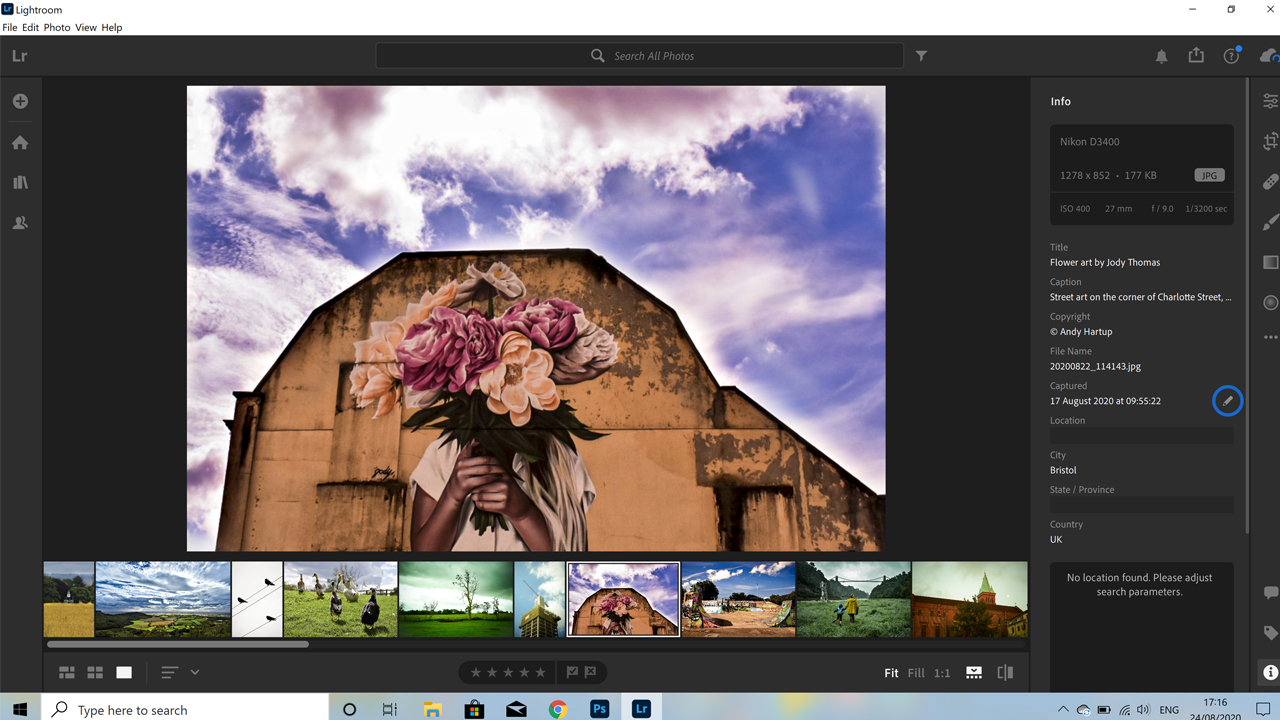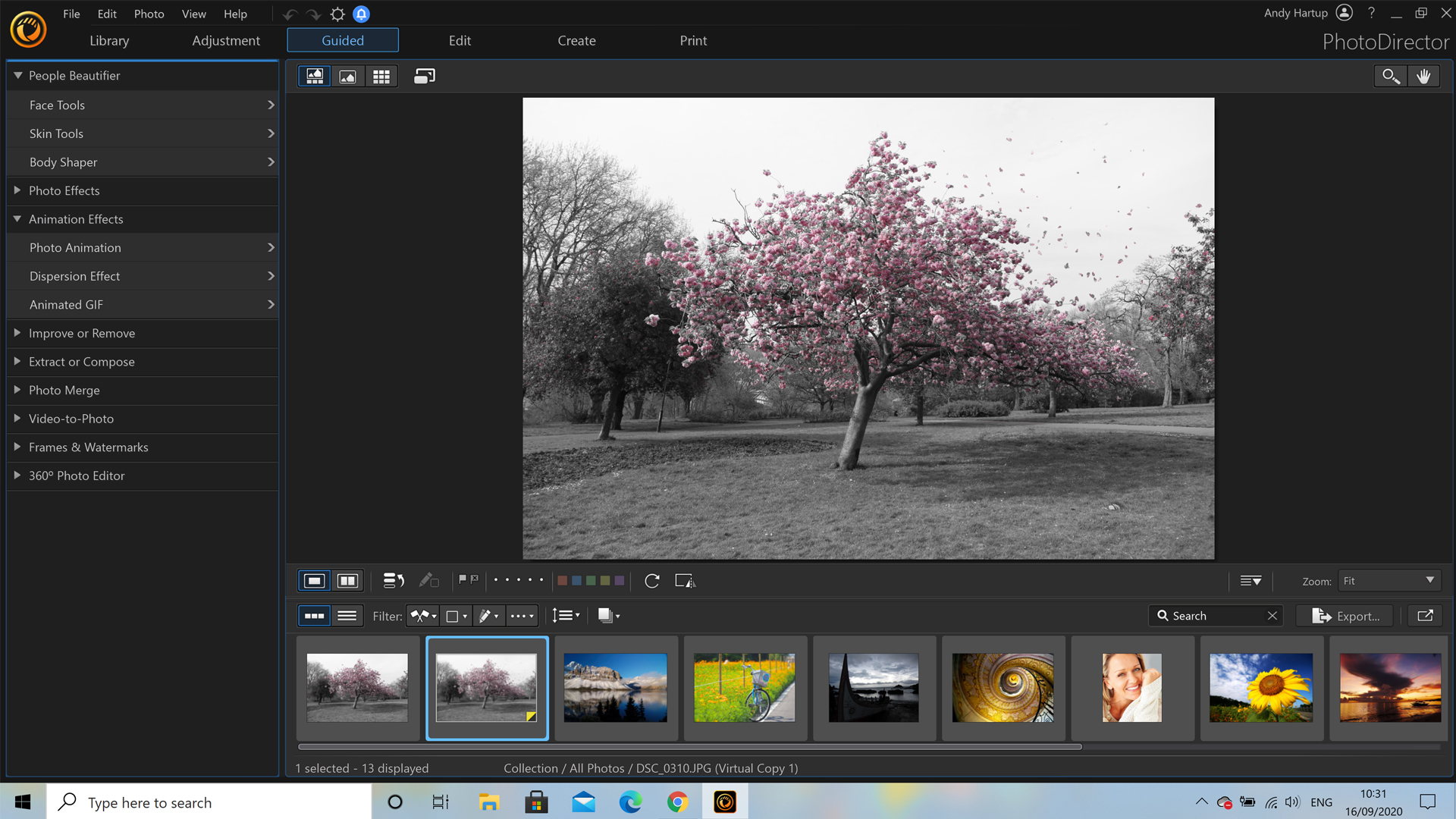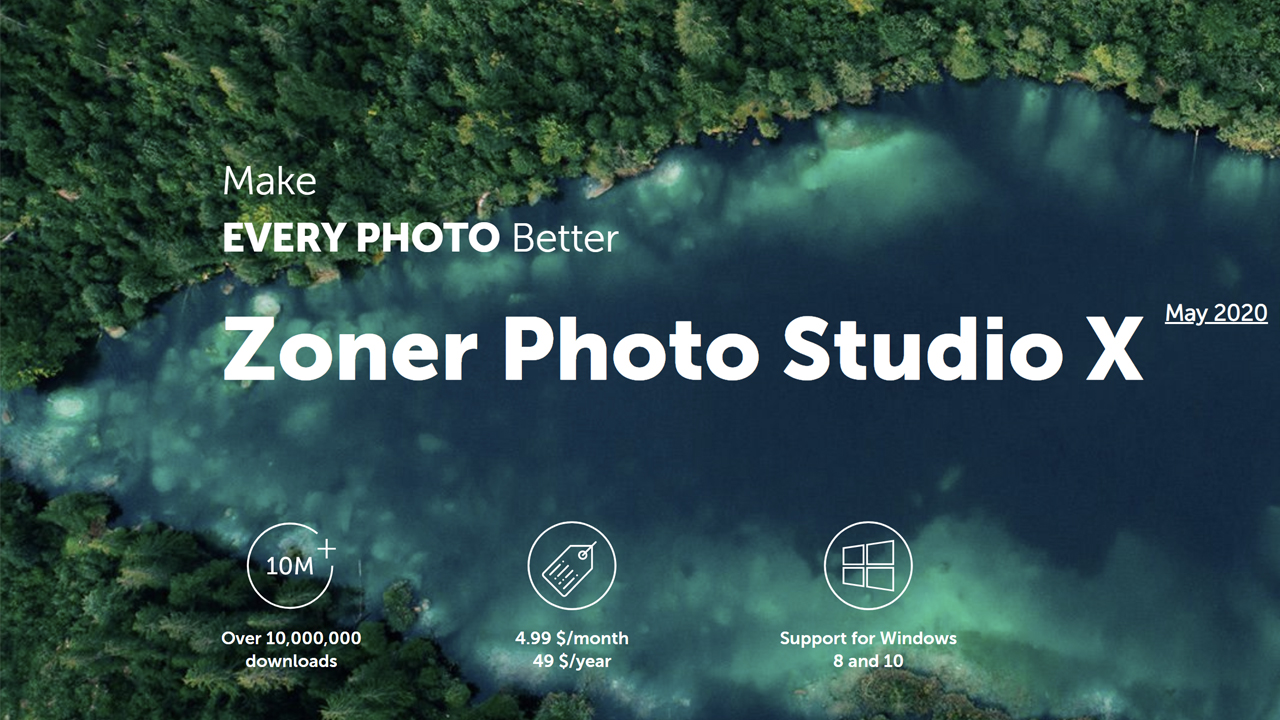Design Programs Using Digital Photos as a Start
Best photo organizing software 2021

The best photo organizing software has transformed how we manage our images. Once upon a time, the average household would be littered with random photographs and film reels – scattered recollections of the past. And even now that digitization has revolutionized the process of capturing and saving data, it can be easy to 'lose' photos amid the thousands of other documents that we have stored on our computers.
As you'll see in our guide to the best photo organizing software, having one of these packages installed on your system will make it so much easier to arrange your images so that you can locate them whenever you want to. Typically, you can file photos by date, location and category, and some of the products listed even feature facial recognition tools, meaning you can sort your pictures according to who is in them. Most photo organizing software also comes with a range of editing tools – though if you want to do a really professional job, check out our guide to the best photo editing software.
Of course, photos aren't meant to be stashed away in folders indefinitely, and if you want to display that cute picture of your child's first steps, that funny birthday shot, or even a montage of different memories, there are plenty of ways that you can do it. Some photo organization software comes with features for viewing your images in fun and novel ways. Or you might want to explore our guides to the best photo slideshow software and the best digital photo frames.
1. Adobe Lightroom CC: Best photo organizing software overall

A superb combination of organizing and editing in one package
Specifications
Compatible with: Windows and Mac
Install size: 458MB
Tagging: Yes
Rating: Yes
Reasons to buy
+Organizer and editor in one +Superb mobile app +Works perfectly with Photoshop
Reasons to avoid
-A little tricky to navigate
One of our favourite things about this version of Adobe Lightroom is that it automatically backs up your current project to the cloud when used as part of the Adobe Photography Pack. This means that your files are easy to access, as you can scroll through them either at your laptop or via the mobile app. So if you're out and about taking photographs, you can actually organize them immediately, rather than having to wait until you're back home with your computer.
That's just a small benefit of this all-singing program, though, which also allows you to quickly rename and tag images, and add in location data too. You can batch sort images as well, so if you've taken a bunch of shots in one place you can group them with tags, locations or other metadata. You can also automatically set copyright to be added on import, which is a timesaver for professional photographers.
If you want to create more design-based projects, by adding graphics to your images, you can quickly import to Photoshop, work on them, then switch back to Lightroom with ease. There are several views to help you visually sort images too. You can share photos or folders of images with friends and family, or collaborators (clients, if you're a business) and get their feedback and activity on each one. Considering Lightroom is an unrivalled photo manipulation app too, the value you get here is incredible.
- Read our Adobe Lightroom CC review
2. CyberLink PhotoDirector: Best for beginners

Easy to use and relatively cheap, PhotoDirector is great for beginners
Specifications
Compatible with: Windows, MacOS
Install size: 2GB
Tagging: Yes
Rating: Yes
Reasons to buy
+Sort by face recognition +Simple to use +Cheaper than Adobe CC
Reasons to avoid
-Limited file support
CyberLink PhotoDirector is perfect for beginners looking to roll a photo organizer and editor into a single package. Not only is it cheaper than paying for Lightroom CC, but it's also got a few handy tricks up its sleeve to rival Adobe's service. You can sort images using the regular options, like tags and ratings, or you can use PhotoDirector's face recognition software if you have a lot of images of people. It's surprisingly accurate, and will sort your images correctly more often than not.
For the beginner, there are over 40 pre-set filters for improving images once you've imported them, along with a suite of advanced editing options for anyone more comfortable with enhancing and manipulating images. It isn't as powerful as Lightroom and Photoshop combined, but it's enough for most users.
You can pull images directly from flash drives, cameras, and scanners without leaving the interface. While it does support RAW, JPG, TIFF and PNG files, this program does not support PDF, PSD or GIF files, which could be a deal-breaker depending on the contents of your image collection. Once you're done you can access images from any connected device, as you have 50GB of cloud storage, and you can import to any HDD or direct to Facebook or Flickr.
- Read our CyberLink PhotoDirector 365 review
3. ACDSee Photo Studio 2021: Best for file organizing

A great organizer and editor, although it lacks a Mac version
Specifications
Compatible with: Windows
Install size: 2GB
Tagging: Yes
Rating: Yes
Reasons to buy
+Really easy to use +Search for and delete duplicate files
Reasons to avoid
-No Mac version
ACDSee Photo Studio Professional 2021 lets you to organize your photos in a variety of ways, such as using keyword tags or color labels. You can also give your photos ratings so you can easily sift through your best images. The organizational interface is intuitive and easy to navigate, and ACDSee allows you to regulate your photo collection by viewing and editing metadata. We like the ability to search for and delete duplicate images within the program too.
It supports 86 different file formats, and the most common files – RAW, JPG, TIFF and PSD – are on the list. You can directly import images from cameras, scanners and flash drives, as is standard. Once your images are in there are 54 included filters, making it easy to give your photos an artistic feel. You can also perform basic edits, including red-eye removal, cropping, resizing and color adjustments. The batch processing feature saves time by making the same edits to multiple images at once. Advanced users will rue the absence of more in-depth features, but beginners will be happy with what's here.
Sadly, while ACDSee 2021 does offer an online photo gallery, you have pay for the Home Plan subscription to use it, which does impact the value.
- Read our ACDSee Photo Studio 2020 review
4. Corel Aftershot Pro 3: Best budget organizer

A simple, cheap photo organizer and editor
Specifications
Compatible with: Windows and Mac
Install size: 400MB
Tagging: Yes
Rating: Yes
Reasons to buy
+Fast batch conversion +Well priced
Reasons to avoid
-Needs PaintShop Pro for detailed edits
If you want to save money on your photo organizer, and still get something powerful enough to enhance images, batch convert, and effectively sort your pictures... Aftershot 3 is a great option. It's the companion to PaintShop Pro 2021, and works in a similar way to the Lightroom / Photoshop combo. Aftershot has a wealth of tools for retouching and enhancing photos, along with a large number of presets if you don't want to adjust things like expose, contrast, highlights etc yourself.
As an organizer, Aftershot 3 is extremely powerful. You have all the usual tools for sorting, like tagging, rating, and creation of galleries and folders. There are an assortment of quick review options, to help you sort through similar images, and you have a number of search options for your images when you're looking for specific types (you can, for example, search by camera type to separate phone and digital camera shots).
The value of Aftershot is the main selling point, though. While it's around $70 at full price, you'll often manage to get hold of it for less than $50, which is a fantastic price for such a powerful organizer.
5. Corel PaintShop Pro 2021: Best value organizer and editor combo

PaintShop Pro is a good organizing tool, and a great editing one too.
Specifications
Compatible with: Windows
Install size: 3GB
Tagging: Yes
Rating: Yes
Reasons to buy
+Good value organizer and editor +Very powerful
Reasons to avoid
-No online storage -No Mac version
If you're looking to bundle a powerful editor with a decent organizer, and you'd rather not pay a monthly fee, PaintShop Pro 2021 is a safe bet. Like the other photo organizers, it separates photos by keywords, calendar dates, categories and allows you to rate your photos and search by how much you like them. You can also access a backup manager and view your photos' EXIF and IPTC metadata to see what setting your camera was on when you took a shot. However, the software cannot search for and remove duplicate images, so you will have to do this manually, which can take a lot of time. This interface is very user friendly, and packs the necessary tools to satisfy more experienced users.
Paint Shop Pro has some of the best editing tools like content-aware fill, which removes unwanted objects from your images and fills in the space believably. Yes, these tools are offered by Photoshop CC, but that costs more to use. There are paint brushes and pencil tools, as well as a blemish remover and healing tools, so that nothing distracts from your portraits and photos.
This really is software for anyone looking to get the whole package, at a cheaper price than Adobe offers. Again, though, it isn't as powerful as Lightroom and Photoshop combined, and because Corel releases yearly updates, you'll miss out on new features unless you upgrade, which does impact the value a little.
- Read our Corel PaintShop Pro 2021 review
6. Zoner Photo Studio X: A solid all-rounder

A decent all-rounder that offers solid editing and organizing
Specifications
Compatible with: Windows
Install size: 300MB
Tagging: Yes
Rating: Yes
Reasons to buy
+The interface is very easy to navigate
Reasons to avoid
-You must pay a subscription to use this software
Zone Photo Studio is a terrific program that offers plenty of organizing tools. You'll find the interface separated into four different tabs: Manager, Develop, Editor and Create. It's easy to find what you need here, as everything is well labelled. Organizing photos takes place in the Manager Tab. You can give your images star ratings, keywords, calendar dates, titles, locations and color labels. You can even add a specific GPS location to your photos to see where you've been on a map and to search your images by location. With all of these searchable options, it will be easy for you to organize your photos in the way that makes the most sense to you.
You can import photos into Zoner Photo Studio directly from your phone, camera or Facebook account, so getting images is a snap. The biggest downside we found is that this software must be purchased with a subscription of either $4.99 a month or $49.00 a year. There is also a decent amount of editing tools, giving you the ability to adjust the hue, brightness and contrast of your images to put them to their best advantage. The 35 included filters can help you add style to your images with just a few clicks.
- Read our Zoner Photo Studio X review
How we tested the best photo organizer software
Our testers are experienced photographers and graphic designers who can recognize the most helpful features of organizing software. We performed the same edits in each program to see which ones had the best abilities. Some programs can make images pixelated, grainy or unfocused after applying edits. For this reason, programs that maintained excellent image quality after an edit ranked higher in our image quality score.
We wanted to see how well each program's organizational features worked, so we loaded the same set of photos into each system and assigned them to different categories. Programs with more arranging options were rated higher, since they were likely to be helpful to a wide user audience.
The number of file formats that a program uses is also very important. We wanted to make sure that the highest-ranked programs were compatible with the most common image files. These include RAW, JPEG, PSD, PDF, TIFF, GIF and PNG. Programs that supported all of these files scored higher, while programs that didn't scored lower.
How much does photo organizing software cost?
The more basic options in our guide start at around $25, but a few of the sophisticated packages can cost anywhere between $60 and $130. As a reminder, these programs are usually available on a subscription basis, so you'll need to pay renewal fees every month or year.
Those pricey sophisticated programs tend to come with additional helpful tools, such as editing features that allow you to tweak your images. If you don't need this and are really just looking for some basic organization software, then go for one of the cheaper options, as there's not much difference when it comes to categorization tools – the expensive packages just offer better editing features.
Unfortunately, there aren't any brilliant organizing software programs available for free. If you're looking for something that doesn't cost a penny, then your best bet is to organize and label your digital photos manually.
Things to look for when choosing a photo organizing software
Storage
While some photo organizing software restricts you to filing and arranging your images on your computer's hard drive, other products offer online cloud storage. Not only does this provide invaluable back-up in case your computer breaks down; it can also enable you to access your photos from different devices and locations. Be aware, though, that cloud storage can cost extra.
Supported files
Digital images come in a range of file formats – and, while pretty much every photo organizing product supports the common ones (JPEG, TIFF, GIF, etc), not all of them will enable you to view and edit the more advanced types, such as RAW and PSD. This is something to bear in mind if you're working in a professional environment where a wider range of formats may be used.
Features
If you're going to spend good money on a piece of photo organization software, then you might as well get the best possible value for your investment. So, explore the features that each product offers – editing tools are always useful, as they enable you to do things like brighten, sharpen and crop your images. Some software also enables you to display your pictures in a slideshow, complete with music and animated transitions – all of which can enhance the viewing experience.
Installation size
All of the products on our list will need to be installed on your computer, and they take up a fair amount of memory – in some cases up to 2 or 3GB. If you don't have much space on your hard drive, then you might want to consider one of the more basic offerings. Just bear in mind that these may not come with as many tools and features as the more memory-intensive packages.

Andy is Editor-in-Chief of Top Ten Reviews. With over 18 years experience in both online and print journalism, Andy has worked for a host of world-leading tech and gaming brands, including PC Gamer and GamesRadar. He specializes in photography, technology and smart home, and has provided expert comment for sites like The Guardian. In his spare time Andy is an amateur photographer, and teaches at the National Film and TV School.
Design Programs Using Digital Photos as a Start
Source: https://www.toptenreviews.com/best-photo-organizing-software
0 Response to "Design Programs Using Digital Photos as a Start"
Postar um comentário